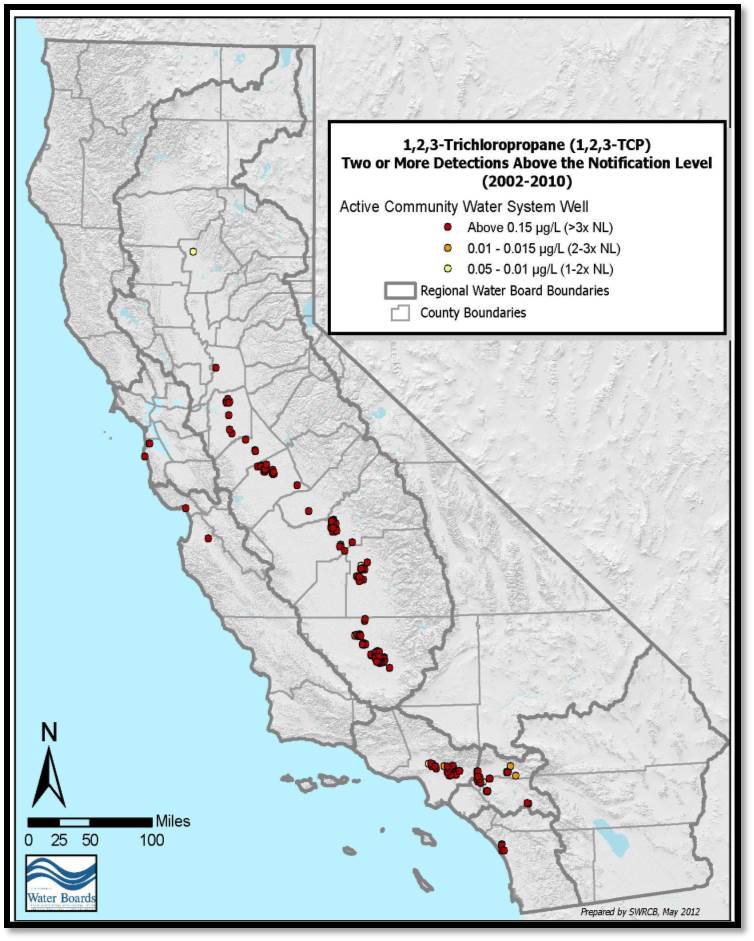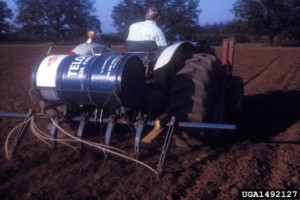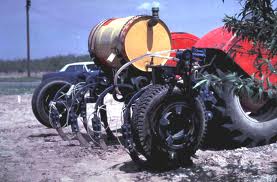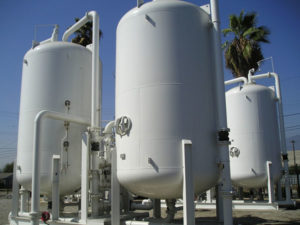Robins Borghei LLP: The Leader in 1,2,3-TCP Groundwater Contamination Litigation
Our law practice at Robins Borghei LLP focuses primarily on helping public water suppliers recover the costs of responding to groundwater contamination. In July 2017, the California State Water Resources Control Board, Division of Drinking Water, adopted a new, enforceable regulatory standard, called a Maximum Contaminant Level, for 1,2,3-trichloroporane (“TCP”), which the State describes as a “potent carcinogen” that “poses a significant carcinogenic risk when it occurs in drinking water” at low levels. TCP has already been detected in hundreds of water wells in California, but that number is sure to grow as water systems begin regularly monitoring for this pernicious and expensive-to-treat contaminant.
TCP does not occur naturally; if TCP is detected in groundwater, someone is responsible for the contamination. Although TCP contamination has been ass ociated with certain industrial hazardous waste sites, most of the TCP contamination in California’s groundwater was caused by soil fumigants manufactured by Shell Oil Company (“Shell”) and The Dow Chemical Company (“Dow”) that were used widely by farmers from the 1950s through 1980s.. Tragically, the active ingredient in these fumigants broke down in the soil into harmless byproducts in a matter of days, but the TCP in those products, which was an unnecessary impurity and provided no benefit to the farmers who used them, will remain in the ground for many years to come.
ociated with certain industrial hazardous waste sites, most of the TCP contamination in California’s groundwater was caused by soil fumigants manufactured by Shell Oil Company (“Shell”) and The Dow Chemical Company (“Dow”) that were used widely by farmers from the 1950s through 1980s.. Tragically, the active ingredient in these fumigants broke down in the soil into harmless byproducts in a matter of days, but the TCP in those products, which was an unnecessary impurity and provided no benefit to the farmers who used them, will remain in the ground for many years to come.
The good news for affected water suppliers, however, is that, in many cases, viable avenues to recover the costs of treating or otherwise remediating TCP from responsible parties are available. Founding partner Todd Robins has been representing water suppliers in TCP cost-recovery cases for over 14 years. The lawyers at Robins Borghei LLP have represented approximately 40 cities, water districts and water companies in this type of litigation, and are co-lead plaintiffs’ counsel in the coordinated TCP litigation proceeding in California. No law firm in the country has more experience, and has had more success, handling TCP cost-recovery litigation than Robins Borghei LLP. See below for more information regarding the characteristics, regulatory status and sources of TCP in groundwater.
The Products
TCP was an unnecessary impurity in soil fumigants used to control nematodes (microscopic worms that affect plant roots). TCP-containing fumigants were used extensively by farmers throughout California’s agricultural regions in the production of multiple crops from the 1950s through the 1980s. In California, these fumigants, known as D-D and Telone (and later, Telone II) were among the most widely used pesticides in the history of the State. TCP accounted for approximately 1% of D-D, which was manufactured by Shell, and approximately 0.1 to 0.4% of Telone and Telone II, which were manufactured by Dow. Shell took its p
the 1980s. In California, these fumigants, known as D-D and Telone (and later, Telone II) were among the most widely used pesticides in the history of the State. TCP accounted for approximately 1% of D-D, which was manufactured by Shell, and approximately 0.1 to 0.4% of Telone and Telone II, which were manufactured by Dow. Shell took its p roduct off the market in 1984. Dow reformulated its Telone product in the mid-1970s and rebranded it “Telone II.” Since the 1990s, Dow has sold a virtually TCP-free version Telone II.
roduct off the market in 1984. Dow reformulated its Telone product in the mid-1970s and rebranded it “Telone II.” Since the 1990s, Dow has sold a virtually TCP-free version Telone II.
TCP’s Hazardous Characteristics
D-D and Telone were liquid mixtures designed to be injected directly into the soil. The active ingredient, known as 1,3-dichloropropene, or 1,3-D, would volatilize into a gas, spread through the soil, and then break down into harmless byproducts after several days. The inactive TCP, on the other hand, was barely volatile and incredibly persistent. Indeed, scientific evidence has shown that, in typical groundwater conditions in California’s Central Valley, TCP has a half-life of hundreds of years – one of the most persistent organic contaminants ever encountered. TCP is also mobile, meaning that travels with rain and irrigation water down into aquifers. Evidence also demonstrates that, because TCP is heavier than water, it often penetrates into deeper aquifer zones than other agricultural contaminants. In short, widespread groundwater contamination was an inevitable consequence of injecting TCP into soil as a constituent of soil fumigants.
In addition to its unusually harmful properties as a groundwater contaminant, TCP is also highly toxic in drinking water. Animal studies have shown that TCP is “a potent carcinogen.” Such studies have led the International Agency for Research on Cancer to classify TCP as “probably carcinogenic to humans.” Similarly, the National Toxicology Program classifies TCP as “reasonably anticipated to be a human carcinogen.” The California Office of Environmental Health Hazard Assessment (“OEHHA”) summarized the animal toxicology data for TCP as follows:
- “1,2,3-TCP was a potent tumorigenic agent at many sites. In both rats and mice, the animals died early and the deaths were judged to be due to the tumors.”
- “Therefore it is prudent to assume that 1,2,3-TCP represents a significant carcinogenic risk when it occurs in drinking water.” (Emphasis added.)
Regulatory Status of TCP
Under California law, the first step in the regulatory process for establishing a drinking water standard is adoption of a Public Health Goal. A Public Health Goal is not an enforceable standard, but rather a regulatory objective that is “based exclusively on public health considerations.” Health & Safety Code § 116365(c). “If the contaminant is a carcinogen . . . , the public health goal shall be set at the level that, based upon currently available data, does not pose any significant risk to health,” defined as an excess cancer risk of no more than one in one million (1 x 10-6) based on lifetime consumption. Id. In 2009, after an extensive peer review process, OEHHA issued a final Public Health Goal for TCP in drinking water of 0.7 parts per trillion (“ppt”) – the second-lowest ever set for a drinking water contaminant in California. (See our link to the Office of Environmental Health Hazard Assessment Final Public Health Goal Technical Support Document at the bottom of this page.)
Once a Public Health Goal is set for drinking water contaminant, the State then establishes an enforceable drinking water standard, known as a Maximum Contaminant Level, or “MCL.” Under California law, an MCL “shall be set at a level that is as close as feasible to the corresponding public health goal, placing primary emphasis on the protection of public health, and that, to the extent technologically and economically feasible . . . avoids any significant risk to public health.” Health & Safety Code § 116365(a). An MCL is “the maximum permissible level of a contaminant in water.” Health & Safety Code § 116275(f) (emphasis added). All public water systems must comply with MCLs.
On July 18, 2017, the State Water Resources Control Board’s Division of Drinking Water, the State agency that regulates public water systems, adopted an MCL for TCP of 5 ppt. Because California’s detection limit for reporting purposes for TCP is 5 ppt, and therefore any detectable concentration of TCP exceeds the MCL, there is no safe level of TCP in drinking water, according to California’s regulations.
Under the new TCP standard, starting in January 2018, all public water systems in California are now required to monitor for TCP in their water sources. If TCP is detected above the MCL in a well, monthly sampling for six months is required to determine if the average concentration violates the MCL. If a well is determined to be out of compliance, the water system will be required to provide quarterly public notification or shut the non-compliant well down, pending installation of treatment. A single detection of TCP at a level of 50 ppt or higher (i.e., greater than 10 times the MCL) may result in immediate closure of the well. While California’s Division of Drinking Water appears likely to give water systems – especially smaller systems in disadvantaged communities – time to implement corrective action for MCL violations, failure to comply with the MCL can eventually lead to fines and other consequences.
TCP Treatment
TCP is expensive to remove from drinking water supplies. As part of its MCL regulation for TCP, California has designated Granular Activated Carbon treatment as the “best available technology” for TCP removal. Carbon treatment involves the installation of several large vessels containing thousand s of pounds of activated carbon. As the water passes through the vessels, the TCP and other organic matter attach to the surface of the carbon granules and are removed from the water. Eventually, the carbon becomes saturated and needs to be changed out before TCP breaks through into the treated water. TCP tends to break through more quickly than other organic contaminants. This is the primary reason why Granular Activated Carbon treatment involves significant operation and maintenance costs over time.
s of pounds of activated carbon. As the water passes through the vessels, the TCP and other organic matter attach to the surface of the carbon granules and are removed from the water. Eventually, the carbon becomes saturated and needs to be changed out before TCP breaks through into the treated water. TCP tends to break through more quickly than other organic contaminants. This is the primary reason why Granular Activated Carbon treatment involves significant operation and maintenance costs over time.
TCP Litigation
More than 40 water supplies in California have filed suit against Shell and Dow seeking to recover the costs of treating or otherwise remediating TCP contamination in their groundwater supplies. All of these TCP lawsuits have been “coordinated” before a single judge in San Bernardino Superior Court.
Robins Borghei LLP founding partner Todd Robins took on his first TCP cost-recovery case against Shell and Dow in 2004 on behalf of a water company that provides drinking water to the Ka’anapali Resort in Maui, Hawaii. He has been handling TCP lawsuits on behalf of California water suppliers since 2005, including the following:
|
|
TCP Litigation Media Coverage and Resources
Please click on the media articles and resources linked below to find out more about our firm’s TCP litigation practice.
- SJV Water, 2.24.22: “Massive dollars” needed to clean tainted groundwater from Kern County’s banking projects
- Reuters, 11.2.2021: California farm town lurches from no water to polluted water.
- San Francisco Chronicle, 5.18.2021: Central Valley water districts get OK to sue Dow, Shell over groundwater pollution.
- SJV Water, 11.4.2020: Expiration dates looming for TCP lawsuits.
- SJV Water, 9.8.2020: Proposed $171 million Central Valley groundwater bank faces TCP contamination.
- SJV Water, 9.1.2020: Tainted valley groundwater could stymie banking deals.
- California Association of Mutual Water Companies, February 2019 Newsletter: State beats back legal challenge to 1,2,3-TCP MCL.
- VPR (Public Radio for Central California), 8.14.2018: To pay for 1,2,3-TCP cleanup, a viable strategy: sue.
- Fox 40 News, 8.13.2018: Notice about toxic chemical has residents worried about Manteca’s drinking water.
- Fresno Bee, 6.13.2018: Cancer-causing chemical found in Tulare tap water. Now what?
- Water Deeply, 8.10.2017: California’s plan to tackle a carcinogen widespread in water: Decades after declaring 1,2,3-TCP a carcinogen, California is finally regulating the toxin. But the cost of remediation will be high and communities are turning toward litigation to pay for water treatment.
- KQED (Public Radio for Northern California), 7.25.2017: California decides all drinking water must test for a toxin. But who pays?
- CBS SF Bay Area, 7.25.2017: “Insidious” drinking water carcinogen has California water customers facing rate hikes.
- NBC’s Today Show, 7.18.2017: California votes to regulate toxic chemical that could be in water nationwide.
- NBC Bay Area, 5.11.2017: Nearly a million Californians exposed to pesticide chemical linked to cancer in their drinking water.
- Sacramento Bee, 5.8.2017: California proposes stringent cap on toxic chemical in drinking water.
- California Healthline, 4.27.2017: California proposes stringent cap on toxic chemical in drinking water.
- Environmental Working Group, 4.11.2017: Cancer-causing pesticide “garbage” taints tap water for millions in California.
- HBO Vice News, 3.15.2017: Something in the water: California is finally going to regulate a chemical it identified as carcinogenic 25 years ago.
- Water Deeply, 3.4.2017: California set to regulate carcinogen in water for decades: Hundreds of drinking-water wells across California’s San Joaquin Valley have been found to contain 1,2,3-trichloropropane, a likely human carcinogen. This month, the state has taken a big step forward in regulating the chemical.
- Chemistry World, 1.9.2017: Shell fined $22m for drinking water contamination.
- KQED (Public Radio for Northern California), 12.27.2016: Clovis Water Verdict Could Boost Cases of Neighboring Valley Communities.
- Fresno Bee, 12.21.2016: Clovis wins $22 million against Shell Oil over toxic drinking water.
- San Francisco Chronicle, 12.8.2016: State water board must set limit on carcinogen in water.
- California Water Journal, Summer 2016: Rural Water Agencies Impacted by 1,2,3-TCP, the Next Contaminant to be Regulated in California, Can Sue Responsible Parties to Recover Costs.
- Pacific Standard Magazine, 5.4.2016: Unknown, Unregulated, Undrinkable: A probable human carcinogen has been found in water systems throughout California. Farm towns are fighting the state and chemical companies for remediation.
- KQED (Public Radio for Northern California), 3.7.2016: There’s a Cancer-Causing Chemical in My Drinking Water, But California Isn’t Regulating It.
- Courthouse News Service, 4.1.15: Water District Sees Carcinogens at the Tap.
- ABC-TV Channel 30, 2.3.15: Livingston Gets State of the Art Water Filtration System.
- San Francisco Daily Journal Article, 8.20.12: Plaintiff lawyers focus on TCP. Cancer-causing chemical in drinking water has triggered recent litigation.
- Fresno Bee, 8.7.12: Earth Log: Valley lawsuits multiply over TCP in water.
- Fresno Bee, 4.21.12: ‘Garbage’ chemical TCP threatens Valley water.
- California Office of Environmental Health Hazard Assessment, 8.2009: Final Public Health Goal Technical Support Document.
The above articles require Adobe Reader. If you don’t have this application, click here to download/install.